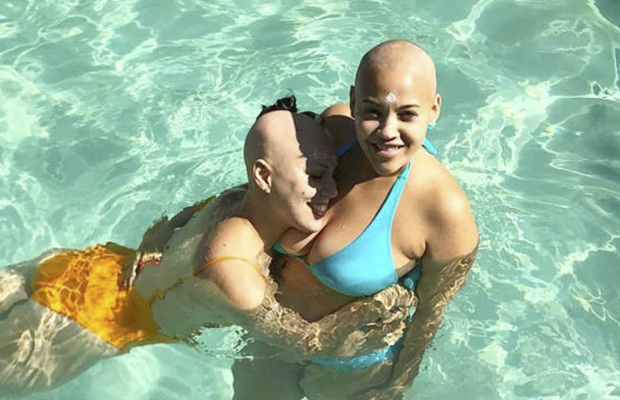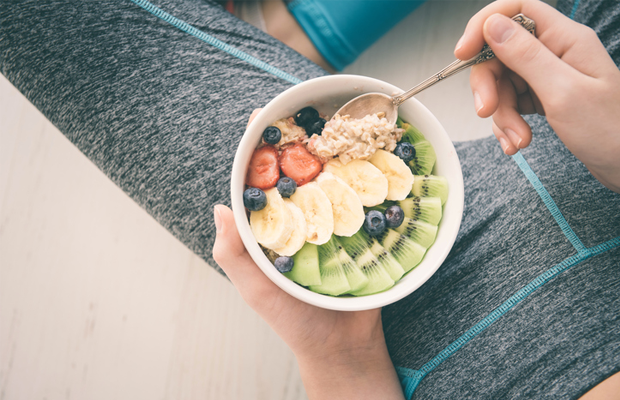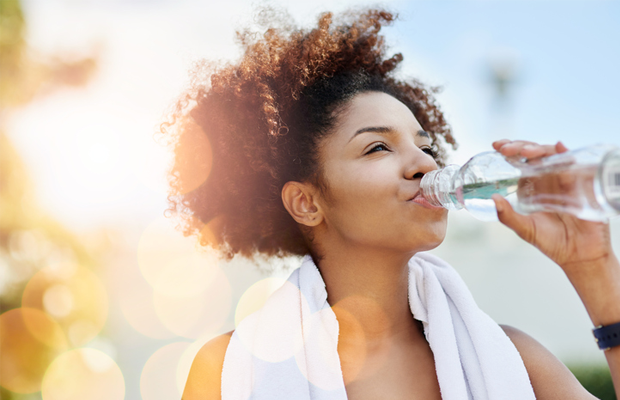The hyponatraemia inquiry into how hospitals managed the fluids of five children who died has taken 14 years.
Daily Archives: 30/01/2018
Health24.com | ‘My hair started falling out at 8 years old but I’m done covering it up’
Often, hair is seen an integral part of a woman’s femininity and beauty. It’s something we’re taught and conditioned to believe from a young age, from the permeating presence of long-haired Barbie dolls to Disney princesses with floor-length, flowing locks.
Photographer Roché Permall was forced to confront these ideas at a very young age when she was diagnosed with alopecia, a condition that results in severe hair loss.
Here’s her story, and how she’s dealt with it.
The beginning
When Roché was eight years old, her mom discovered a large, round patch toward the front of her head.
“She took me to see a dermatologist who prescribed topical cortisone cream to stimulate hair growth,” she says. “Within three months, all my hair had fallen out and I was completely bald.”
What followed was a circus of doctor’s waiting rooms, consultations and inspections. They’d been to hospitals, dermatologists, the UCT Skin and Hair Clinic, but nothing worked.
“They tried injections, shampoos and abrasives to stimulate growth,” says Roché. “Everyone wanted to try something different. Then my eyebrows and eyelashes fell out to and my parents decided to stop it all.”
Roché’s mom felt that her daughter was being treated like a guinea pig, but no clear plan seemed to be in place to help her. In the end, her mom opted for a homeopathic treatment.
“Within two months, my eyelashes grew back and eventually my hair, too. I’ve been with Dr Jeggels since then,” says Roché.
Read more: “I lost my hair to lupus — this is why I’ve stopped wearing a wig”
Growing up without hair
At first, Roché covered up her head with hoodies and a bandana. In high school, she opted for a bandana with a scarf over her head. Eventually, she settled for a black scarf that she tied into a bun at the nape of her neck. Her strands would grow back, and then in other periods, it would fall out.
She also tried laser therapy, hair pieces and wigs to cover up, but it didn’t work very well.
“[Wigs] were uncomfortable and made me feel more insecure,” she says. The really nice ones, made from 100% human tresses, were just too pricey.
Read more: Khloé Kardashian had severe hair loss after this traumatising event
Because Roché was so young, everything seemed confusing to her.
“It was really hard as a young girl to go through all this emotion. I could never understand why me!” she says.
Added to that, without hair, she was different to the girls at school. Primary school proved exceptionally tough.
“Children couldn’t understand what was exactly wrong. Some children felt sorry for me and didn’t know what to say to me, and others bullied me a lot, which left me in tears.” She became withdrawn and depressed, despite seeing a counsellor to work through her insecurities.
Finally, in high school, she found a group of friends that made everything bearable. “I joined the drum majorettes and met some friends who accepted me and that’s ultimately what any normal child needs: support and comfort. Some of those girls remain my friends to this day!” she says.

What she’s learnt
While society’s making huge strides toward rewriting the narrative about what a woman should look like (or wear, or even date), the conversation around hair still needs to be teased in its many forms.
“I still get pretty emotional about not having a full head of hair,” says Roché. “Not a day goes by that I don’t find myself admiring women with long, beautiful hair. But I’ve realised at the age of 26 that hair shouldn’t define you. You are bigger and better than hair. 2018 has already been a big change. I’ve decided to go public with my condition on social media and I’ve decided to go completely bald and shave the last bit of my hair.”
Having a support system has also been the biggest help for Roché.
“My boyfriend for being the greatest at helping me out and just always being my side for the past fours years of my life. He accepted me, flaws and all, and I am truly grateful. The support from friends and family have been completely amazing,” she says.
This article was originally published on www.womenshealthsa.co.za
Image credits: Supplied

‘Overwhelming’ evidence for adding folic acid to flour
The B vitamin, which can prevent birth defects, will not harm the general public, a study says.
Stellar embryos in nearby dwarf galaxy contain surprisingly complex organic molecules
[unable to retrieve full-text content]

Stellar magnetism: What’s behind the most brilliant lights in the sky?
[unable to retrieve full-text content]

It’s not how you play the game, but how the dice were made
[unable to retrieve full-text content]

Health24.com | How many kilojoules do I need to lose weight?
Kilojoules are those little units of energy we consume whenever we eat, well, anything. And they are arguably the most talked about part of any weight-loss journey.
The general rule is that if you eat more kilojoules than you use, you’ll gain weight. And if you take in fewer kilojoules than you use, you’ll lose weight. And if those numbers are more or less even, your weight will stay about the same.
It seems simple, but the number of kilojoules you need to lose weight, maintain weight or gain weight from lean muscle depends on your activity levels, body size, hormones, sleep and more, explains registered dietitian Wesley Delbridge, a spokesman for the Academy of Nutrition & Dietetics.
So figuring out how many kilojoules you need per day can be complicated.
And, it’s also important to remember that, when it comes to cutting kilojoules for weight loss, lower is not always better.
According to the American College of Sports Medicine, your kilojoules should never dip below 5 020.
That’s because most women, unless they are very small, will burn more kilojoules than that doing literally nothing, says registered dietitian nutritionist Jonathan Valdez, owner of Genki Nutrition and a spokesperson for the New York State Academy of Nutrition and Dietetics.
“Less than that and you could shock your body into starvation mode, which will slow your metabolism, decrease your muscle mass, and likely keep you from getting the nutrients you need to sustain daily activity,” Delbridge explains.
Read more: Your guide to carb cycling for weight loss
So, if you’re asking yourself, “How many kilojoules do I need a day?” read on as experts explain what you need to know to get your kilojoule intake just right.

How to determine your base kilojoule needs
In order to figure out how many kilojoules you need to lose or gain weight, you first need to determine how many you need to maintain.
Guidelines say young women should aim for 7 531 to 10 041 daily kilojoules, depending on age and activity level, but that range isn’t necessarily tailored to your specific needs – so it’s not as precise as it could be.
For a more exact number, start by finding your basal metabolic rate (BMR), which is the minimum number of kilojoules your body burns at rest, suggests physical therapist Grayson Wickham, founder of Movement Vault.
Your BMR accounts for 60 to 75% of your total daily kilojoule burn, according to a review in Medicine and Science in Sports and Exercise.
“To most accurately calculate your BMR, you’d need to go to a lab to have your carbon dioxide and oxygen analysed after having fasted for 12 hours and slept for eight. But, that can be a little pricey and a rough estimation of your BMR can be found using a few different equations,” says Wickham.
One study published by the Journal of the Academy of Nutrition and Dietetics found the Mifflin-St. Jeor equation to be highly accurate, so it is now considered the gold standard when it comes to calculating BMR.
For comparison’s sake, however, some experts prefer the Harris Benedict equation for determining BMR.
Read more: Are you making this huge weight loss mistake?
For women, the Mifflin-St. Jeor equation is: BMR = (10 x weight in kg) + (6.25 x height in cm) – (5 x age in years) – 161.
For women, the Harris Benedict equation is: BMR = 655.1 + (9.563 x weight in kg ) + (1.850 x height in cm) – ( 4.676 x age in years).
The results for both will be slightly different, but they’re pretty darn close, says Wickham. When you find your BMR on your own, consider it a really good estimate, not a hard-and-fast rule, he adds.
For both equations, finding your BMR requires your weight, height, age and gender (yes, guys have their own equation). Wondering why? “The more you weigh and the more mass you have, the more fuel you need to sustain your organs,” explains Valdez. That’s why people who weigh more have heavier BMRs.
Age is a factor in the equations because, as you get older, muscle mass declines by five or so percent each decade after the age of 30, Wickham explains. This might change as more women start strength training, but as a general rule, that’s fair, he says.
And if you’re wondering why the formula is different for men and women, it’s because research published in The Journal of Clinical Investigation shows that a woman’s BMR is typically around 5 to 10% lower than a man’s.
Now what? Once you know your BMR, you know the bare minimum number of kilojoules you would need to keep your body alive if you were going to lay in bed all day, says Wickham.
But you need to take into account everything else you do that burns kilojoules (walking the dog, folding laundry, climbing five floors of stairs to your apartment, bi-weekly CrossFit class, Thursday evening yoga…).
To do that, multiply your BMR by the factor that best represents your activity level.

Read more: What’s the best way to track weight loss: a measuring tape or scale?
If you are sedentary = BMR x 1.2
If you do light exercise 1-3 days a week = BMR x 1.375
If you exercise at a moderate intensity 3-5 days a week= BMR x 1.55
If you are exercise at a high intensity 6-7 days a week = BMR x 1.725
If you are into two-a-days or have a physically demanding job = BMR x 1.9
How many kilojoules you need to lose weight
Okay, so how many kilojoules do I need a day to lose weight? Once you know how many kilojoules you need to maintain your weight, you simply subtract some kilojoules to put yourself into a deficit.
How many kilojoules? Well, to lose roughly half a kilo of fat per week (a healthy goal) you need a 2 092kJ per day deficit, he explains. In other words, just delete 2 092 kilojoules from the number you found above.
But a kilojoule deficit doesn’t have to (and, in reality, shouldn’t) come solely from eating less, says Valdez. Exercise can help, too.
If you are game for taking your workouts to the next level, Valdez recommends decreasing your kilojoules from food by 1 046 per day, and increasing the intensity or duration of your workouts so that you are burning an additional 2 092 kilojoules two to three times a week through exercise.
That means if you already take a cycling class three days a week, add in a 30-minute walk two days per week to keep the kilojoule burn going. Or, if you currently live a lightly active life, consider incorporating a yoga class, strength-training class or a hike into your routine.
However, that does mean that on the days you don’t do any physical activity at all, you should decrease your kilojoule intake by closer to 2 092kJ, he says.
Your goal is to burn about 2 092 fewer kilojoules than you take in per day, through diet, exercise, or both. You do the math.
Read more: 5 weight-loss rules from nutritionists that you should break
How many kilojoules you need to gain weight from muscle
Not everyone who counts kilojoules wants to lose weight. Some want to gain it from lean, powerful muscle. Gaining weight from muscle is a great way to improve your health and even decrease your body-fat percentage.
Bonus: Since muscle is metabolically active, it can also help you shed fat without cutting kilojoules, says Wickham. When you start to gain muscle, your BMR will increase, which means that your body needs more kilojoules just to go about its daily function, he explains.
“If you want to gain weight, the simple trick is to tack on 1 046 to 2 092 extra kilojoules in healthy, whole foods per day. Every one to two weeks, you’ll have added half a kilo safely,” says New York City nutritionist Brittany Kohn.
To gain muscle without also gaining fat, you need to increase your protein to 1.8 to 2g per kilogram of body weight every day, so the majority of these additional kilojoules should come from protein, says Valdez.
And the rest should come from carbs like whole grains, fresh fruits, and vegetables, which will help power your workouts.
This article was originally published on www.womenshealthmag.com
Image credits: iStock
NEXT ON HEALTH24X

Health24.com | Could eating with fat people make you eat more?
Ever had to answer the question, “Which famous person would you love to have dinner with?”
Think carefully before you choose your ideal dinner partner – turns out your companion is just as important as the food on your plate when it comes to weight management.
When eating out, helpful tricks like sharing an entrée or ordering an appetiser instead of a main dish can curb calories. But your choice of dining companions may factor into the equation, too.
What the study entailed
An experiment done at the Cornell University Food and Brand Lab confirmed the theory that people are less likely to stick to their own diet rules when eating with or near someone who is overweight. The researchers found that diners at a buffet ate larger portions of unhealthy foods – and smaller portions of healthy food – even when the overweight person ate less.
One possible explanation for this behaviour is that people become less in tune with their goals when they see others who are overweight.
Studies have also found that diners can be influenced by being near anyone who’s overeating, even when that person is slim. Their overeating can encourage your overeating.
Your strategy
No, we are not suggesting that you get rid of friends or family members and eat in solitude. Avoiding overeating takes planning and knowing your weaknesses.
1. Know your enemy
Identify when you are triggered to eat more, and practice self-control in those situations.
2. Avoid the pitfalls
Stay out of harm’s way by avoiding all-you-can-eat restaurants or buffet options. If, however, you find yourself in such a situation, take control by having small portions of the foods you absolutely love and loading the rest of your plate with vegetables.
3. Tell it to the world
Tell your dining companions about your diet goals so they won’t unintentionally tempt you to overeat; also remind yourself of your goals before you enter any restaurant.
4. Plan, plan, plan
When possible, decide in advance what you’re going to order by reading menus on restaurant websites. This makes it less likely that you’ll be influenced by your environment.
For those times when you do find yourself facing a buffet, take a full tour of the table before you make any selections. Other research from Cornell found that people load up on the foods placed at the beginning of a buffet and that they take even larger helpings when the dishes are unhealthy. So, be sure to identify the location of the healthiest choices before you reach for a serving spoon and start filling your plate.
Image credit: iStock
NEXT ON HEALTH24X

Vaginal mesh: England review into scale of harm
The audit will reveal how many women have suffered ill consequences from the controversial treatment.
Stephen Hawking to take NHS’s Hunt to court
A judicial review is granted over government health policy plans.



